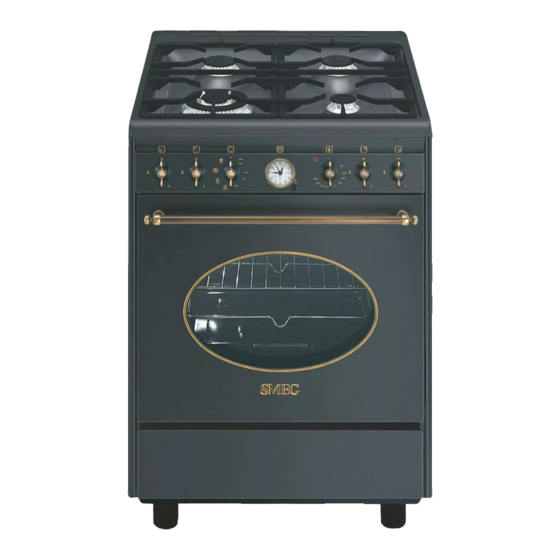
Table of Contents
Advertisement
Quick Links
1. INSTRUCTIONS FOR USE..................................................... 46
2. SAFETY PRECAUTIONS........................................................ 48
3. ENVIRONMENTAL CARE ....................................................... 50
4. GET TO KNOW YOUR APPLIANCE ....................................... 51
5. AVAILABLE ACCESSORIES ................................................... 52
6. FRONT PANEL ........................................................................ 54
7. CLOCK WITH TIMER AND END OF COOKING..................... 56
8. USING THE COOKING HOB .................................................. 57
9. USING THE OVEN .................................................................. 59
10. COOKING WITH THE OVEN .................................................. 63
11. CLEANING AND MAINTENANCE .......................................... 68
12. EXTRAORDINARY MAINTENANCE....................................... 75
13. INSTALLING THE APPLIANCE............................................... 77
14. ADAPTATION TO DIFFERENT TYPES OF GAS .................... 82
15. FINAL OPERATIONS .............................................................. 84
INSTRUCTIONS FOR THE USER: these instructions contain user
recommendations, a description of the controls and the correct
procedures for cleaning and maintenance of the appliance.
INSTRUCTIONS FOR THE INSTALLER: these are intended for the qualified
technician who must install the appliance, set it functioning and carry out
an inspection test.
@
Further information about the products can be found at www.smeg.com
Contents
45
Advertisement
Table of Contents














Need help?
Do you have a question about the CO68GMA and is the answer not in the manual?
Questions and answers